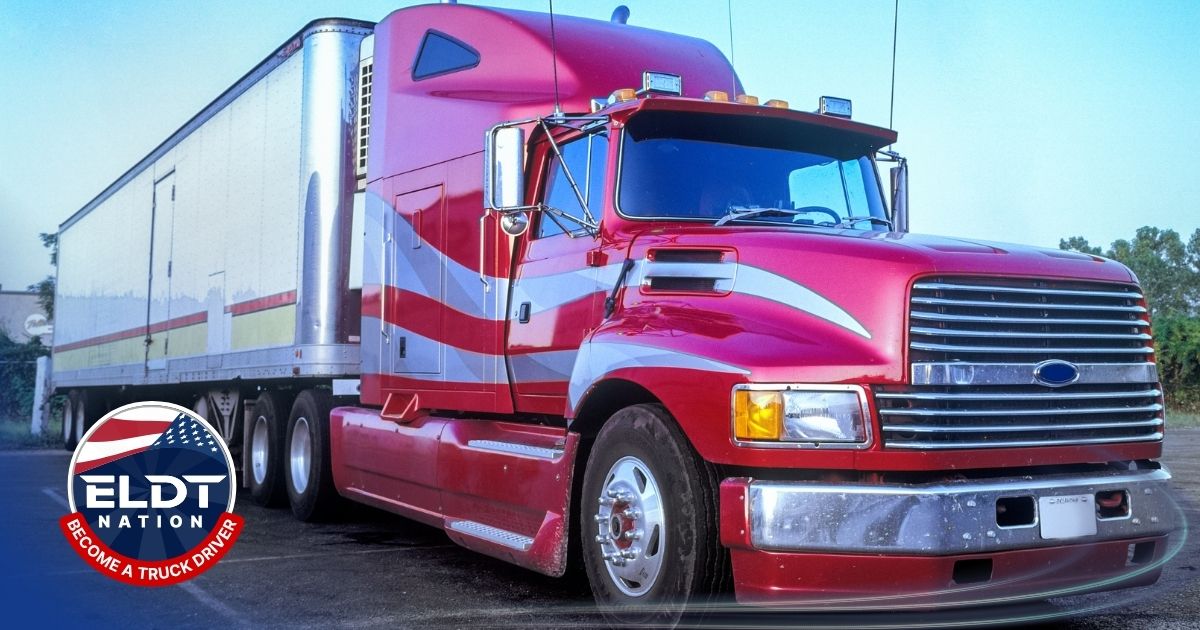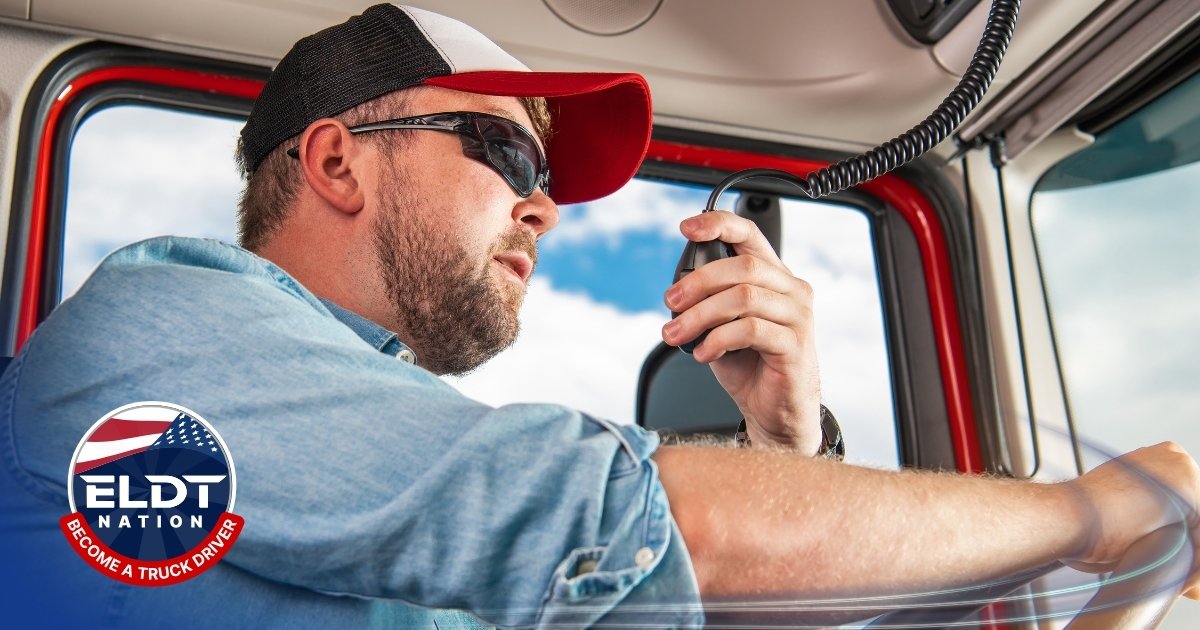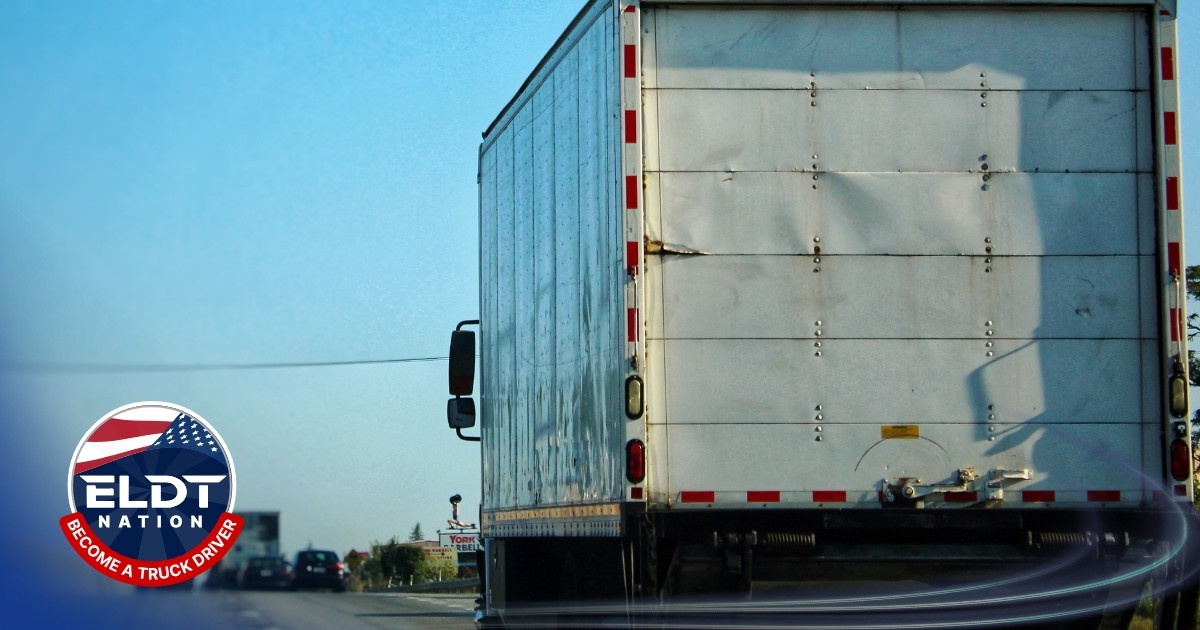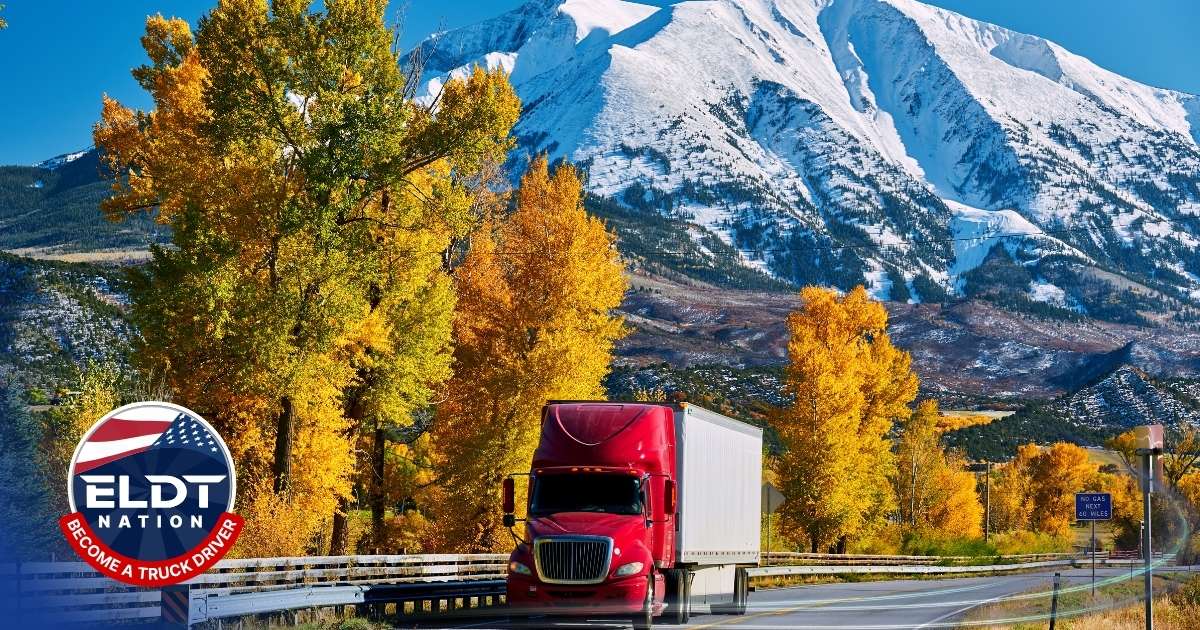Best Semi Trucks of All Time: 10 Legends Ranked for Reliability & Driver Comfort
Ask any truck driver at a fuel stop which semi truck is the best, and you will almost always get a strong opinion - sometimes backed with decades of experience, sometimes with a dose of brand loyalty. For some, nothing beats the ruggedness of a Kenworth W900L; for others, the quiet efficiency of a Volvo VNL is proof enough. These debates are part of trucking culture, and they often go far beyond horsepower numbers or chrome styling.
Methodology: How We Ranked the Top 10
Creating a fair list of the best semi trucks requires more than counting sales or listing horsepower figures. Truck drivers measure greatness in uptime, comfort, and the confidence that comes from knowing your truck will pull through in the Rockies, in the Great Plains, and everywhere in between. For that reason, this ranking balances technical performance with real-world considerations.
The Top 10 Semi Trucks of All Time (Ranked)
#1 Freightliner Cascadia - The All-Rounder for Fleets & Solo O/Os
Why it tops the list
Freightliner’s Cascadia sits at the top largely because it delivers a rare combination of efficiency, drivability, and support that reduces real-world cost per mile. With a market share hovering around 40% in North America, it is the most common Class 8 platform on U.S. highways, and that scale brings two practical advantages: a deep parts ecosystem and the broadest service footprint. Paired with an aerodynamically tuned shell and a wide spec range (approximately 350–600 horsepower and up to about 2,050 lb-ft of torque depending on configuration), it adapts to everything from dry van linehaul to demanding regional routes without punishing fuel bills.
Comfort and daily livability
Modern Cascadia sleepers are engineered for long stints away from home. Drivers will notice:
- Cab insulation and NVH control that cut wind and road noise, reducing fatigue over 9–11 hour days.
- Climate performance that keeps bunk areas stable without constant high-fan operation, useful for rest quality in extreme temperatures.
- Smart storage (overhead bins, under-bunk compartments) that keeps essentials in arm’s reach and stops clutter from migrating to the dash.
- Driver-assist suites that reduce cognitive load on monotonous interstate stretches and around merging traffic.
For solo O/Os, that translates into more restful off-duty time. For fleets, it’s a retention play: drivers stay longer when the bunk is quiet, cool, and functional.
Powertrain and performance overview
Most fleets standardize on Detroit powertrains in the Cascadia, commonly the DD13 or DD15 paired to a Detroit automated manual. The broad envelope - roughly 350–600 hp and up to about 2,050 lb-ft - lets spec writers balance regional torque needs with long-haul cruise efficiency. Predictive features and downspeeding strategies keep the engine near its sweet spot, while integrated cooling and aftertreatment layouts simplify service access relative to older generations.
Fuel economy and aerodynamics
Cascadia’s body adopts a smooth nose, fairings, and active aero add-ons that work with powertrain software to trim parasitic losses. In the field, fleets often see the Cascadia lead or tie for the top of their MPG leaderboard at comparable weights and lanes. Over 100,000–150,000 highway miles per year, even a small advantage translates to thousands of dollars saved.
Maintenance, uptime, and serviceability
Large components are accessible with minimal panel removal, and common-failure parts are positioned for quicker turns. The real edge is network density: more dealers and authorized repair points mean fewer deadhead miles to service and shorter waits for common wear items. That is critical during peak seasons when every day down costs load revenue.
Dealer network and parts availability
No other brand matches Freightliner’s combination of dealer count, mobile service coverage, and aftermarket parts availability in the U.S. When a Cascadia does need help mid-route, there is usually a bay nearby and a shelf with the part in stock.
Resale and market dynamics
The flip side of that massive installed base is resale pressure. Because there are many Cascadias in circulation, late-model units can sell for less than comparable Kenworth and Peterbilt iron. Savvy buyers use this to their advantage at purchase time; sellers should plan replacement cycles and detail maintenance records to support pricing.
Spec tips that pay off
- Powertrain integration: Keep engine, transmission, and axles within the same family for the cleanest software and diagnostic experience.
- Aero packages and fairings: Take the full aero kit unless running low-speed, high-drag routes where body damage is common.
- Idle management: Pair cab HVAC upgrades with an APU or battery-HVAC solution to preserve rest quality without high idle time.
Common pitfalls to avoid
- Under-spec’d torque for mountainous lanes leads to frequent downshifts, higher exhaust temps, and driver frustration.
- Ignoring dealer proximity for your actual lanes can negate the network advantage; map the stores against your freight map.
- Assuming “cheap to buy” means “cheap to own” without validating MPG and maintenance records.

#2 Kenworth T680 / W900L - Reliability Reputation & Driver-Centric Design
Why it ranks high
Kenworth has a long-standing reputation for building trucks with drivers in mind. Much of the appeal comes from low operating and maintenance reputations, tight cab ergonomics, and spec choices that let fleets prioritize durability without sacrificing refinement. Many experienced drivers specifically seek Kenworths with Cummins X15 power for its service familiarity and pull on grades, while the integrated PACCAR MX-13 remains a strong option for weight and efficiency. In newer spec, Kenworth’s Digital Mirror System further improves forward and side visibility and can trim drag.
Comfort and driver experience
Kenworth cabs are known for their quiet, solid feel and thoughtful control layout:
- Roomy sleepers with logical zones for work, rest, and storage.
- Supportive seats and a steering position that reduces shoulder and wrist strain on long days.
- Lighting and HVAC tuned for rest quality, with efficient defrost performance in winter.
- Optional Digital Mirror System moving the view closer to the driver’s sightline, reducing head movement and helping situational awareness in traffic or tight docks.
The result is a truck that many drivers are willing to pay a premium to drive, which, for fleets, can translate to stronger recruiting and retention.
T680 vs. W900L: which fits which job
- T680: The modern, aero-forward long-haul platform. It pairs best with fleets and O/Os who want premium comfort and technology while still chasing top-quartile fuel economy.
- W900L: The heritage long-hood icon. It trades a bit of aero efficiency for classic style, spacious feel, and under-hood access. Many O/Os choose the W900L for its resale strength and driver pride in ownership.
Powertrain, drivability, and performance
Kenworth pairs its cabs with PACCAR MX-13 or Cummins X15 engines and automated or manual boxes. The MX-13 keeps weight down and works well for disciplined fuel programs; the X15 is the torque king that many heavy or mountainous operations prefer. Steering and suspension tuning yields a planted highway feel without excessive harshness on broken pavement.
Fuel economy reality
Kenworth’s aero work on the T680 narrows the MPG gap to the most aero-obsessed competitors. That said, heavier specs - reinforced suspensions, large bumper guards, added accessories - can nick efficiency. Spec clean if MPG is a primary KPI, and let lane profile dictate axle ratios rather than copying a friend’s setup.
Maintenance and uptime
Panels and service points are designed for technician access, and the brand’s documentation is strong. While the dealer network is not as dense as Freightliner’s, Kenworth’s stores are typically experienced with high-mileage engines and have quick access to PACCAR and Cummins parts channels. Many owner-operators report lower “nuisance” issues over time when maintenance is kept proactive.
Resale and total economics
Kenworths - especially the W900L - tend to hold value exceptionally well. For buyers, that supports lower lifecycle cost even when the purchase price is higher. For sellers, proper records and tasteful spec choices fetch premiums, particularly in markets that prize long-hood conventionals.
Spec tips that pay off
- Engine choice by lane: Cummins X15 for heavy grades or heavy-haul; MX-13 for lighter long-haul with strict MPG goals.
- Digital Mirror System + aero kit for T680s on interstate lanes to maximize visibility and trim drag.
- Driver amenities: inverter, shore power, and premium mattress - small costs with big impact on rest quality and retention.
Common pitfalls to avoid
- Over-weighting the build with unnecessary add-ons that erode MPG and payload.
- Ignoring dealer coverage for the lanes you actually run; validate parts availability for both PACCAR and Cummins in your service radius.
- Assuming a W900L is only “a show truck.” Properly spec’d, it can be a reliable earner with strong resale, just not your top aero champion.
Best for
Premium long-haul operations and owner-operators who value durability, a quiet, well-appointed interior, and strong residuals. Choose T680 for top aero; choose W900L for heritage appeal and driver pride.
Iconic variant
W900L remains one of the most recognizable rigs on the road, a classic long-hood with modern guts. It carries a loyal following and a resale market few models can match.
.jpg)
#3 Peterbilt 579 / 389 / 379 - The Icon for Looks + Long-Haul Comfort
Why it ranks
Peterbilt blends classic styling with modern long-haul refinements. The 579 is the aero flagship, offering predictive cruise control and one of the largest mattresses in the industry, while the 389 carries forward the timeless long-nose look that many drivers dream of owning. The 379 is trucking royalty: clean lines, straightforward access, and an aftermarket ecosystem that keeps older examples earning. Across the board, Peterbilt benefits from PACCAR integration and lightweight aluminum construction that helps offset accessories and sleeper options.
Comfort, quiet, and interior fit/finish
Peterbilt sleepers are widely praised for their calm, premium feel:
- Acoustic isolation that damps engine and road noise, improving rest quality on 34-hour resets or team shifts.
- Furniture-grade cabinetry and durable soft-touch surfaces that hold up after years of vibration.
- Large sleeper layouts (especially on the 579) with space for real mattresses, work surfaces, and appliances.
- Ergonomics that keep frequently used controls within reach and provide clear sightlines over the hood on conventionals.
For teams, the 579’s sleeper space can significantly reduce friction during handoffs and overnight stops, which directly affects on-time performance and morale.
Powertrain choices and highway behavior
Most late-model Petes pair PACCAR MX-13 engines with automated PACCAR boxes or Eaton-type AMTs; many owner-operators still prefer Cummins X15 for heavy grades and widespread service familiarity. On the road, the 579’s aero front and fairings work with predictive cruise to keep RPM where it belongs, while the 389/379 deliver that planted, confident feel nostalgists love.
Fuel efficiency: aero vs. heritage
- 579: The right choice if MPG is a North Star metric. The aero shell and software packages can deliver noticeable savings across a 48-state lane mix.
- 389/379: These long-hoods sacrifice some aerodynamic edge for style and access. Smart spec decisions (bumper choice, roof fairings, tire selection, and careful add-on restraint) can narrow the gap.
Maintenance, uptime, and access
Under-hood access on long-hood Petes is a genuine advantage for certain jobs, simplifying routine checks and some repairs. Parts availability is strong thanks to PACCAR’s network and an enormous aftermarket that keeps 379s and 389s on the road. In practice, many shops know these trucks intimately, which shortens diagnostic time.
Resale strength and market perception
Peterbilts - especially the 389 and the best-kept 379s - consistently command premium resale values. Clean spec, tasteful customization, and complete service history amplify that premium. The 579 also holds value well in late-model fleet trim, particularly with driver-amenity packages.
Spec tips that pay off
- Predictive cruise and full aero kit on the 579 for interstate linehaul.
- Aluminum wheels and weight-conscious options to preserve payload and efficiency without compromising sleeper livability.
- Electrical upgrades (inverter, additional 12V/USB circuits) to support appliances safely and reduce idle time.
Common pitfalls to avoid
- Over-customizing a 389/379 with heavy, drag-inducing bolt-ons that erode MPG and payload.
- Ignoring tire and axle ratio alignment with your cruise speeds; a mismatch can eat fuel economy.
- Buying on looks alone without verifying maintenance records, aftertreatment history, and oil samples - especially on older emissions-era 389s.
Best for
Image-minded owner-operators and long-haul teams who want maximum sleeper comfort without giving up highway manners. Choose 579 for modern aero and tech, 389 for classic lines with contemporary capability, and 379 for proven simplicity and a parts ecosystem that never seems to dry up.
.jpg)
#4 Volvo VNL Series - Driver Fatigue Killer with Tech to Match
Why it ranks
The Volvo VNL series is widely regarded as one of the most driver-friendly trucks in the industry, thanks to its combination of advanced safety systems, fatigue-reducing technologies, and premium comfort. Volvo has long leveraged its global engineering background to push innovations in Class 8 trucking, and the VNL shows it in nearly every aspect.
A key differentiator is Volvo Dynamic Steering (VDS), which significantly reduces driver strain on long highway stretches and in crosswinds. Steering effort is dramatically lessened, and the system corrects for road crown and ruts automatically, reducing muscle fatigue over time. Combined with the Volvo Active Driver Assist (VADA) suite, which includes collision mitigation and adaptive cruise, the VNL becomes not just a truck but a safety-first workplace.
The D13 Turbo Compound (D13TC) engine further strengthens the VNL’s case, delivering excellent fuel efficiency through waste-heat recovery while maintaining power delivery across a broad RPM band. Unlike some long-nose conventionals, the Volvo’s slightly smaller, more European-influenced feel makes it easier to maneuver in tighter terminals and urban delivery scenarios, without giving up line-haul efficiency.
Comfort and interior design
- Ride quality: Arguably one of the smoothest rides in the segment, thanks to suspension tuning and cab insulation.
- Sleeper refinement: Quiet, well-insulated sleepers with options for integrated appliances and one of the most ergonomic bunk layouts available.
- Dashboard ergonomics: A driver-centric design with controls clustered within reach, reducing unnecessary movements during long shifts.
- Noise and vibration: Low NVH levels help drivers rest better during downtime, directly addressing fatigue.
Pros
- Top-tier fuel efficiency with the D13TC.
- Industry-leading safety tech (VADA).
- Ease of driving across diverse conditions, from tight docks to mountain passes.
Cons
- Repair costs can be higher, particularly at certified Volvo service centers.
- Parts availability can vary by region, with lead times longer in certain U.S. areas compared to Freightliner or PACCAR.
Best for
Long-haul operators prioritizing comfort, safety, and reduced fatigue. Fleets that emphasize fuel economy and driver retention see the VNL as a strategic choice.
#5 International LT / LoneStar - Modernized Comfort with Visibility & Handling
Why it ranks
International’s LT and LoneStar series represent a major comeback from the troubled ProStar/MaxxForce era. Built around the DriverFirst™ design philosophy, these trucks prioritize driver ergonomics, sightlines, and comfort. With the A26 engine (up to ~475 hp, 1,750 lb-ft) and multiple transmission options, including automated manuals, International positions the LT/LoneStar as fuel-efficient yet versatile.
The LT focuses on aero optimization and daily drivability, while the LoneStar caters to O/Os who want power, visibility, and styling presence. Improved handling, a tighter turning radius, and excellent forward sightlines give both models an edge in reducing driver stress.
Comfort and cab features
- Cab ergonomics: Wide dash angles and instrument placement designed with driver eye movement in mind.
- Visibility: Larger windshield and repositioned mirrors reduce blind spots, improving both safety and confidence.
- Sleeper upgrades: More storage, thoughtful layout, and better HVAC options than older Internationals.
Pros
- Improved safety sightlines reduce accident risk and fatigue.
- Well-equipped sleepers make life on the road more livable.
- Competitive aero gains keep MPG respectable.
Cons
- The brand is still overcoming the reputation damage of the MaxxForce engine era. Buyers should strictly avoid older ProStar units.
Best for
Value-focused fleets and O/Os upgrading from legacy Internationals who want improved comfort, safety, and reliability without premium pricing.
.jpg)
#6 Mack Anthem (plus R-Model legacy) - Tough DNA, Modern TCO Tools
Why it ranks
Mack has always traded on toughness, and the Anthem represents the brand’s modern interpretation of that DNA. Featuring the MP8HE engine with turbo-compounding efficiencies and the mDRIVE HD automated transmission, the Anthem is built for both efficiency and vocational strength. Its bold exterior design and upright cab stance appeal to those who want a serious workhorse with a modern twist.
The Anthem also benefits from GuardDog Connect, Mack’s remote diagnostics system that monitors the truck in real-time and alerts drivers and service centers to emerging issues before they escalate. This significantly improves uptime and reduces unplanned shop visits.
For many, though, Mack’s enduring appeal comes from its legacy R-Model reputation - a truck famous for cold-start reliability and ruggedness in harsh climates. The Anthem taps into that nostalgia while providing technology that can keep TCO competitive with aero-focused rivals.
Comfort and interiors
- Ride quality: Noticeably smoother than earlier Mack B-models, with suspension tuned for OTR conditions.
- Cab design: Clean, functional, with easy-to-clean surfaces and intuitive layouts.
- Sleeper options: Not as expansive as Peterbilt or Volvo, but highly functional for drivers who balance OTR with vocational work.
Pros
- GuardDog Connect diagnostics reduces downtime and surprises.
- Versatility across vocational and OTR applications.
- Brand toughness - drivers trust Mack in harsh weather and rugged terrain.
Cons
- Fewer highway configurations than Freightliner, Kenworth, or Peterbilt.
- Dealer density is more variable depending on the region, which can affect service turnaround.
Best for
Fleets and O/Os running a mix of vocational and OTR routes, especially in harsh climates. Buyers who value reliability, remote diagnostics, and rugged durability will find the Anthem a strong fit.
.jpg)
#7 Western Star 49X / 5700XE - Customizable Workhorse with Detroit Integration
Why it ranks
Western Star has long been a byword for severe-duty durability, and the modern 49X extends that legacy into a platform that can be spec’d for brutal vocational work yet still behave with proper highway manners. Where it separates itself is tight integration with Detroit components - engine, transmission, and axles - which improves efficiency, drivability, and diagnostics. Add WABCO OnGuard collision mitigation, and you get a truck that’s as serious about safety as it is about getting out of a muddy landing with a full load of logs.
For the long-haul crowd that occasionally ventures off pavement (oilfield, forestry, construction support), the 49X is a sweet spot: stout frame choices, high-capacity suspensions, and protection packages - without turning the cab into a punishment chamber. The 5700XE slots in as the road-biased Western Star: still tough, but with an aero focus for steadier highway MPG than old-school square rigs.
Comfort and cab livability
- Stout, rattle-resistant structure: The cab feels planted over broken surfaces; doors shut with a vault-like thunk.
- Spec flexibility: Choose seats, trim, and sleeper layout to match duty cycle - from day cabs to highway sleepers with ample storage.
- Noise control: Better isolation than legacy vocational platforms; engine and wind noise are well managed at cruise.
Powertrain and performance
- Engines: Detroit DD16/DD15/DD13 or Cummins options, letting you tailor torque for steep grades or heavy-haul permitting.
- Transmissions: Detroit DT12 AMT, Eaton AMT/manuals across a spectrum of ratios for vocational creep or highway economy.
- Axle integration: Detroit axles with optimized gear sets pair cleanly with Detroit engines for lower parasitic losses and smooth downspeeding.
Safety and technology
- OnGuard collision mitigation: Radar/camera-based alerts and automatic braking support; a real benefit on dark two-lane approaches.
- Telematics/diagnostics: Detroit connectivity improves fault isolation and service planning, which matters when your lanes run far from metro hubs.
Pros
- Broad engine menu (DD16/DD15/DD13/Cummins).
- Freightliner service network access mitigates the brand’s smaller stand-alone dealer footprint.
- Configuration latitude for logging, heavy vocational, or OTR with tough spec.
Cons
- Smaller standalone dealer base means picking your service partners carefully.
- Getting the spec exactly right matters - niche use cases benefit from an experienced sales engineer.
Best for
Severe-duty fleets, long-logging operations, oilfield, and mixed vocational/OTR users who need a truck that shrugs off punishment but still returns respectable highway economy - think Australia-style road-train fans and North American heavy vocational lanes.
Spec tips that pay off
- Frame & axle ratings: Don’t skimp; over-spec frames and hubs for abusive roads to avoid fatigue cracking later.
- Guarded cooling packages: For dusty or brush-heavy terrain, protect coolers and spec reversible fans.
- Powertrain integration: Keep Detroit-Detroit-Detroit where possible for clean calibration and easier diagnostics.
After ranking ten of the most legendary semi trucks of all time, it’s clear that there is no one-size-fits-all answer to the “best truck” debate. Every driver, fleet, and haul has unique needs, and the right truck is the one that balances freight requirements, comfort priorities, and support networks in a way that makes sense for your operation.
#8 Kenworth T880 - America’s Vocational Benchmark
Why it ranks
The T880 is the U.S. reference point for vocational duty that still sees highway miles. It blends driver-first ergonomics with a chassis engineered for abuse - ideal for dumps, mixers, oilfield, heavy wrecker, and lowboy applications.
Powertrain & chassis
PACCAR MX-13 keeps weight and fuel in check; Cummins X15 covers high-torque and high-GCW specs. AMTs or deep-reduction manuals pair with high-RBM frames, stout suspensions, and broad axle options to match site conditions and bridge laws.
Comfort & uptime
Visibility, insulation, and sensible control placement reduce fatigue on crowded sites and long transfers. Service points are accessible, upfitter routing is clean, and parts are easy to source - key to strong uptime and resale.
Best fit
U.S. contractors needing a tough, configurable platform that stays civil on the interstate. Spec deliberately; unnecessary guards and add-ons add weight and trim MPG.
#9 Peterbilt 567 - Premium Versatility for Worksites & Transfers
Why it ranks
The 567 pairs premium build quality with true vocational flexibility. Set-forward or set-back axle hoods let fleets meet regional weight rules or tighten turning without compromising the cab’s quiet, durable feel.
Powertrain & chassis
PACCAR MX-13 suits weight-sensitive builds; Cummins X15 delivers heavy-haul grunt. Eaton/Endurant AMTs or manuals, vocational suspensions, and clean frame packaging speed upfits and keep PTO layouts straightforward.
Comfort & uptime
Driver space is refined yet hard-wearing, with clear sightlines and simple, glove-friendly controls. Body-builder documentation and tidy electrical architecture cut install errors and shop time, supporting excellent resale.
Best fit
Regional contractors shuttling between job sites and interstate transfers who want a premium driver environment and long-term value. Keep specs purposeful to control weight and cost.
#10 International HX Series - Heavy Duty Reborn for U.S. Construction
Why it ranks
The HX is International’s modern heavy vocational flagship for construction, municipal, refuse, and heavy-haul. It replaces legacy platforms with reinforced frames, wide-track axles, and simplified harnessing designed for punishment.
Powertrain & chassis
International A26 works for weight- and MPG-sensitive transfers; Cummins X15 covers maximum torque use cases. Allison automatics excel in stop-start duty; AMTs/manuals suit tractor roles. High-RBM double-frames, lift axles, and 6×4/8×6 configurations target U.S. job profiles.
Comfort & uptime
Improved glass area and mirror placement enhance low-speed safety. Rugged, easy-clean interiors and accessible service points shorten routine maintenance. Dealer coverage in construction corridors supports predictable turnaround.
Best fit
U.S. fleets needing purpose-built heavy vocational tractors, dumps, refuse packers, or lowboy haulers with practical service access and modern ergonomics - especially where site abuse is the norm.
After ranking ten of the most legendary semi trucks of all time, it’s clear that there is no one-size-fits-all answer to the “best truck” debate. Every driver, fleet, and haul has unique needs, and the right truck is the one that balances freight requirements, comfort priorities, and support networks in a way that makes sense for your operation.
.jpg)







